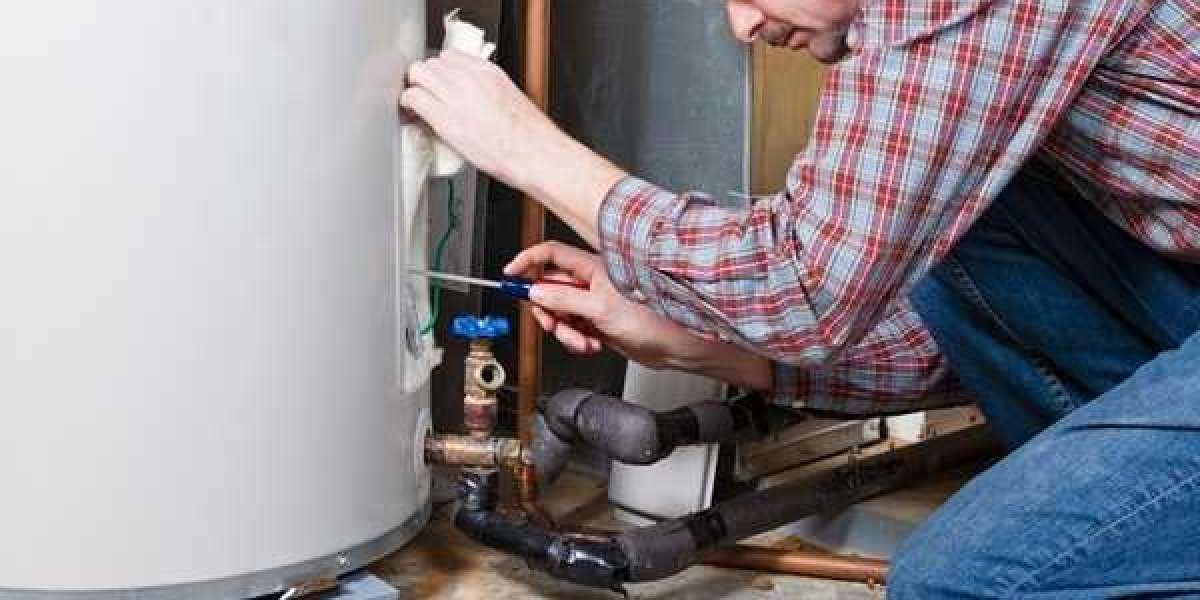There are few modern comforts we take for granted as much as hot water. From a morning shower that helps you wake up to sanitizing dishes and laundry, your water heater works tirelessly in the background. That is, until it doesn't. The signs of trouble can be sudden and alarming—a pool of water spreading across the garage floor, a loud popping or rumbling noise from the tank, or simply no hot water coming from your taps on a chilly Camarillo morning. A water heater failure is more than an inconvenience; it can quickly escalate into a property-damaging emergency. In these moments, knowing how to respond can prevent a bad situation from becoming a catastrophic one. A swift, calm, and informed reaction is your best defense. This guide will walk you through the essential steps to handle a water heater emergency, from immediate actions to finding the right professional for water heater repair in Camarillo, CA.
Recognizing a True Emergency: Know the Red Flags
Not every water heater issue requires a 2 a.m. panic call. However, some symptoms indicate a serious problem that demands immediate attention. Being able to distinguish between a minor issue and a full-blown emergency is the first step.
The most critical red flag is water leaking from the tank itself. A small drip from a pipe connection might be manageable, but if you see water actively leaking from the body of the tank, this is a sign of internal corrosion and potential imminent tank failure. This is a "stop what you're doing and act now" situation.
Another major warning sign is the smell of natural gas or rotten eggs near a gas water heater. This indicates a possible gas leak, which is a severe safety hazard due to the risk of fire or explosion. If you smell gas, you must act immediately.
Unusual noises are also a cause for concern. While some sediment-related rumbling is common, loud banging, popping, or cracking sounds can signal excessive pressure buildup or severe sediment overheating, which can stress the tank and lead to failure.
Your Step-by-Step Emergency Response Plan
When faced with a potential water heater crisis, your actions in the first few minutes are crucial. Staying calm and following a logical sequence will protect your home and your family.
Step 1: Turn Off the Power or Gas Supply
This is the most important step for safety. You must cut off the energy source that heats the water.
- For an Electric Water Heater: Go to your home's main electrical service panel (breaker box) and locate the circuit breaker dedicated to the water heater. Flip it to the "OFF" position. Do not rely on a nearby switch; always turn it off at the breaker to ensure it is completely de-energized.
- For a Gas Water Heater: Locate the gas shut-off valve on the gas supply line leading to the water heater. The valve handle should be perpendicular to the pipe when closed. Turn it a quarter-turn so it is parallel with the pipe. If you smell gas strongly at any point, leave the house immediately and call the gas company from a safe distance.
Step 2: Shut Off the Cold Water Supply
Your next goal is to stop more cold water from entering the tank, which could add to a leak or pressure issue. Find the cold water inlet valve at the top of your water heater. It’s usually a lever-type valve. Turn this lever so it is perpendicular to the water pipe. This isolates the tank from your home's plumbing system.
Step 3: Drain the Pressure by Opening a Hot Water Tap
With the water and power off, you can safely relieve any remaining pressure in the tank and pipes. Go to a sink or tub in your home—preferably one on the highest floor or farthest from the water heater—and turn the hot water tap on fully. This will prevent a vacuum from forming in the pipes and allow any remaining water in the tank to drain out safely if you need to address a leak.
Step 4: Contain Any Active Leaks
If water is actively leaking from the tank, your immediate goal is to direct the water away from your home's structure and belongings. Place a bucket under the leak and use towels to soak up any spilled water. If the leak is significant and you have a floor drain in your garage, try to channel the water toward it. Mitigating water damage at this stage can save you thousands of dollars in repairs later.
Calling in the Professionals: What to Expect from a Repair Service
Once the situation is stabilized, it's time to call a licensed professional. Attempting to repair a water heater yourself, especially under emergency conditions, is dangerous due to risks of electrical shock, gas leaks, scalding, and exposure to high water pressure.
When you call a provider of water heater repair in Camarillo, CA, be prepared to describe the problem clearly. Tell them you've already shut off the power/gas and the water supply. This shows them you've taken responsible action and helps them understand the urgency. A reputable, local emergency plumber will ask key questions about the symptoms and likely dispatch a technician promptly.
When the technician arrives, they will perform a thorough diagnosis. This typically involves:
- A visual inspection of the tank, connections, and the surrounding area for signs of corrosion, leakage, or damage.
- Testing the temperature and pressure relief valve (TPR valve), a critical safety device.
- For gas units, checking the thermocouple, pilot light, and gas burner assembly.
- For electric units, testing the heating elements and thermostats with a multimeter.
Based on their findings, they will present you with a clear repair-or-replace recommendation. A professional will be honest about the prognosis. If your tank is over ten years old and leaking from the tank itself, repair is often not possible or cost-effective, and replacement is the only sensible option. If the issue is a faulty component like a heating element or a valve, a repair can often restore your hot water for years to come.
Preventing Future Emergencies: The Power of Maintenance
The best way to handle a water heater emergency is to prevent it from happening in the first place. Proactive maintenance is the key to extending the life of your unit and avoiding sudden failures.
The most effective preventative measure is an annual professional inspection and flushing. Over time, minerals from our water supply settle at the bottom of the tank. This sediment buildup is the primary cause of rumbling noises and reduced efficiency. It forces the burner or elements to work harder, overheating the sediment and stressing the tank walls, which can lead to cracks and leaks. A professional flush removes this sediment, improving performance and longevity.
As a homeowner, you can also perform a simple test of the TPR valve every six months. Lift the valve's lever halfway and let it snap back. You should hear a gurgling sound as a bit of water is released into the drain pipe. This indicates the valve is not stuck, which is vital for preventing dangerous pressure buildup inside the tank.
A water heater failure can be a stressful event, but it doesn't have to be a disaster. By recognizing the warning signs, executing a calm and safe emergency shutdown, and partnering with a trusted professional for water heater repair in Camarillo, CA, you can navigate the situation with confidence. Your quick response minimizes damage, ensures your family's safety, and paves the way for a swift return to the simple, essential comfort of reliable hot water.








